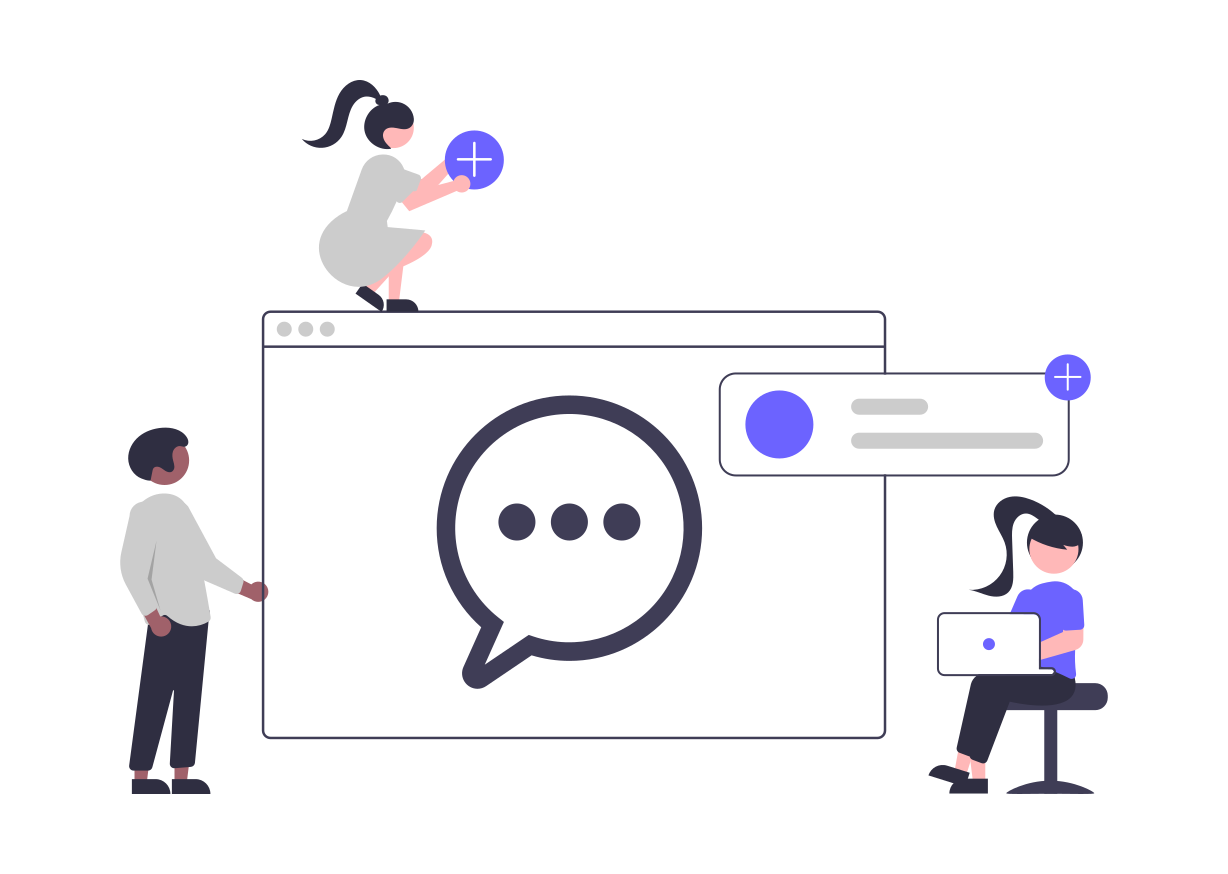Product Context
Pulsate is a communications platform and their customers are community banks and credit unions in America.
Customers are driven by a purpose to serve their communities and support their financial wellbeing.
Some of the communication channels Pulsate offered at the time of this project were push notifications, in-app notifications, newsfeed, SMS and email.
The aim of this project was to propose a new channel to fit alongside the existing options, to increase customer guidance and support.
Tools
- Figma
- LucidChart
- SurveyMonkey
Research
During the research phase of my project, I focused on examining notification channels and communication options in existing banking and credit union apps to understand industry standards.
Push notifications were a consistent finding in all the apps I reviewed, serving as a vital tool for real-time updates and engagement.
Email and contact information were also commonly available for users to contact customer support or relevant departments directly.
However, initiating communication typically required navigating FAQs, making a phone call, or using a message center within the app, placing the onus on users to seek assistance.
Surprisingly, chat facilities were relatively rare, despite the trend of using chatbots for customer support, potentially indicating a missed opportunity for immediate and interactive assistance.

To validate my observations and understand user preferences, I conducted a survey involving a diverse group of app users. The goal was to determine their communication methods and the reasons behind their choices.
The survey revealed that for non-banking apps, a significant majority preferred text-based chat over voice or video communication due to convenience, asynchronous interaction, and a relaxed, less intrusive approach.
In the case of banking apps, users showed a distinct preference for voice communication, especially through phone calls, for seeking assistance. This preference was driven by the perceived efficiency and immediacy of speaking directly with a representative for timely and personalised support in financial matters.
Users also preferred in-app communication options when dealing with banking matters, as it allowed them to maintain a seamless experience within the app and focus on their financial transactions and inquiries.
Analysis
Based on my research, I proposed the use of a chat bot communication channel, due to the following findings:
- Chat bots can be either AI or rules-based.
- Can help users with queries immediately.
- They have natural language processing and understanding.
- Can use both voice or chat commands to interact.
- Can pull information from a site and convert it into text or voice information.
- Can be personalised.
I then created user stories and personas to ascertain the main functionality for the chat bot. These were:
- A user in their 20s who has just set up a savings account, and is new to managing their finances. Prefers to bank online or through an app.
- A user in their 30s who is looking to purchase a property and needs mortgage advice. Needs more in-depth information about available products.
By creating these user stories and personas, the main functionality of the chatbot was clearly defined, ensuring that it would effectively address the unique needs and objectives of these user groups, offering a more personalised and valuable experience within the platform.
Design
During the design phase of the project, my primary focus was on ensuring a seamless user experience for finding and initiating the chat option within the platform.
I started with initial pencil sketches to outline the user journey and identify potential pain points and improvements.
I explored the use of card-based design elements to organise and prominently display the chat option. I also considered whether to use icons or buttons, taking into account user familiarity and design aesthetics.
In terms of information architecture and navigation, I conducted a thorough analysis to determine the optimal location for the chat facility, considering user behavior, context, and platform layout, aiming for easy discoverability and contextual relevance.

The chat option was strategically placed as the first option in the list of available features or services, ensuring immediate access for users.
Clicking on the chat option opened a chat window, and the chat bot greeted users with a personalised initial message to guide them.
The chat bot provided suggested questions to assist users in formulating their queries, but users could also type their own questions for open-ended interactions.
Responses from the chat bot were instant, and a subtle typing animation appeared during brief delays to reassure users.
The chat bot offered links as buttons for quick access to additional information or products, enriching the user experience and encouraging exploration of the platform. These features aimed to provide a seamless, engaging, and supportive user experience with an emphasis on convenience and personalisation.

Summary
Even though the project never progressed to the development stage, it presented a valuable learning opportunity and offered insights that contributed to personal and professional growth.
One of the key takeaways from this project was the exploration of a mobile-first design approach. This shift in perspective brings to light the importance of responsive and adaptive design, as well as the challenges of accommodating various screen sizes and resolutions. It also underscores the significance of optimising user interfaces for touch-based interactions.
This experience allowed me to appreciate the nuances and complexities of designing for mobile devices.
Additionally, delving into this project provided the opportunity to investigate the rise of AI and understand how we interact with AI-driven tools. This exploration included an examination of AI standards and best practices. Understanding how to design, implement, and interact with AI systems is becoming increasingly important. This project allowed for a deeper understanding of the possibilities and challenges associated with AI integration.

